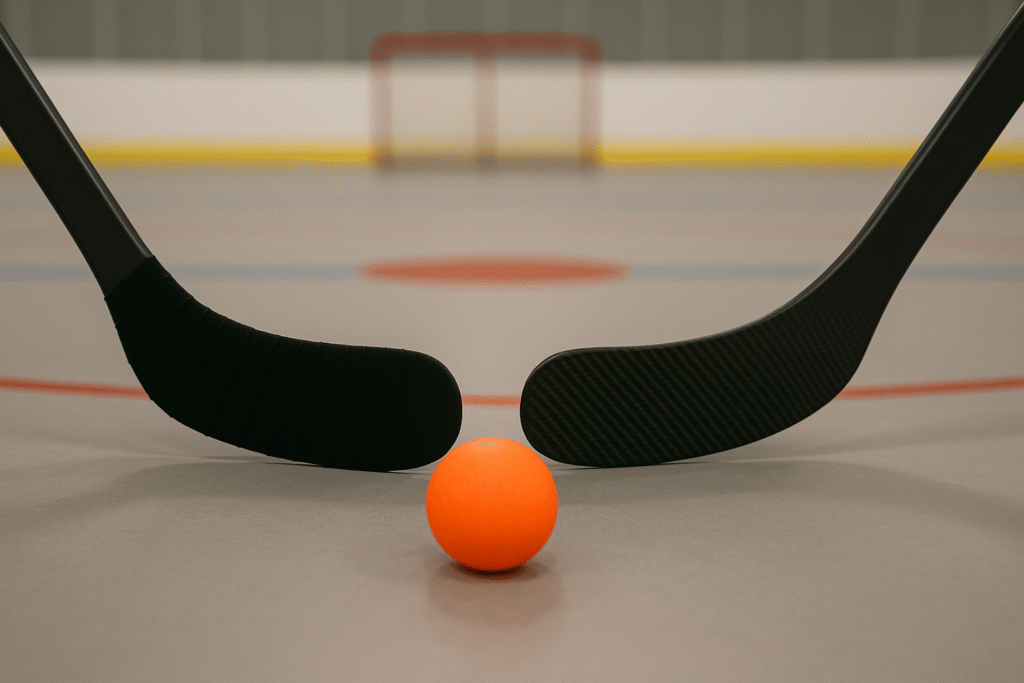If you’ve ever shown up to the rink and noticed a guy with a fully taped blade… or no tape at all… you’ve probably wondered, what’s better for ball hockey?
Tape or no tape?
Unlike ice hockey, where tape is basically a given for puck feel and shot control, ball hockey is a different beast. You’re not gliding on ice, the ball has a different texture and bounce, and friction plays a much bigger role in how your stick interacts with the ball.
I’ve tried it all, taped blades, bare carbon, old school wax jobs, horizontal strips, even deodorant (yes, really). And after years of playing, testing, and watching some of the best players around, here’s my take:
No tape is better. But it’s subjective.
Why Some Players Use Tape
Before we write off tape entirely, let’s break down why some ball hockey players still use it:
1. Shot Control
Some players believe tape gives them better grip on the ball for snap shots and toe flicks. Especially in warm weather, when sweat and moisture can make things slick, a bit of grip can feel helpful.
2. Blade Protection
A layer of tape can help reduce wear on the blade, especially on rough concrete surfaces. If you play somewhere gritty, that extra wrap can delay chipping or fraying.
3. Old Habits
A lot of players come from ice hockey. They’ve been taping their blades the same way since they were kids. It’s part of their routine. Switching feels weird, so they stick to what they know.
4. Customization
I’ve seen some players apply horizontal tape lines across the blade, like thick grip zones. The idea is that the ridges add friction and control during shots and dekes. It looks cool, but in practice, it often messes with ball handling more than it helps.
The Problem with Tape in Ball Hockey
While it’s understandable why some players use tape, here’s the downside — and the reason I personally recommend going tape-free:
1. Too Much Friction
This is the big one.
The ball is smooth and slightly tacky. Tape, especially cloth hockey tape, adds a textured surface that creates too much grip. Instead of gliding, the ball sticks, which leads to blade drag and even rollover, where the ball hops or flips unintentionally.
I’ve watched guys lose control mid-deke or fumble a pass they would’ve handled clean with a bare blade. Tape looks like control… but it often causes more mishandling.
2. Inconsistent Feel
As tape wears down, your feel for the ball changes. What felt great when freshly wrapped may feel sticky, frayed, or soft a few shifts later. That’s annoying — and totally avoidable if you skip tape altogether.
3. It Doesn’t Help Like You Think
A common myth is that tape gives you better grip for shooting. In ball hockey, the weight and density of the ball already gives you natural feedback, unlike a lightweight ice puck. You don’t need extra drag to generate power or feel.
If anything, tape just slows your release and makes catching passes harder.
The Old-School Workarounds
Back in the day, some players used tape with wax or deodorant applied to reduce friction — a slicked-up version of taped blades. It was a way to blend grip with glide.
But honestly? That was from a time when ball hockey balls were lighter and more unpredictable. With today’s modern dense balls and composite sticks, that old-school workaround is mostly gone.
My Recommendation: Go Bare
Personally, I go no tape at all.
Most modern carbon blades are already slightly textured. They’re designed to give you just enough control without dragging. Once you get used to it, the touch feels more natural, responsive, and clean.
You’ll handle better. You’ll shoot quicker. And you won’t deal with tape maintenance.
The Bottom Line
This is one of those debates where there’s no one-size-fits-all answer. Some elite players still tape. Some go bare. Some use grip-enhancing hacks. But after years on the court, I’ll say this:
If you’re new to ball hockey = skip the tape.
If you’ve been playing for years = try a game without it and see how it feels.
Chances are, once you go no-tape… you won’t go back.

